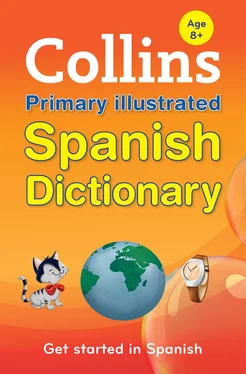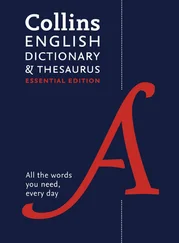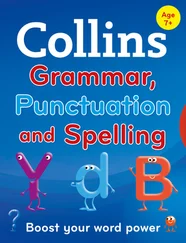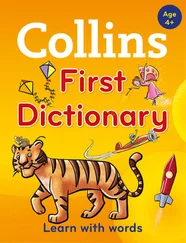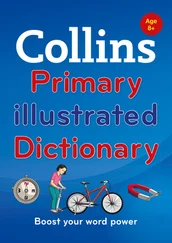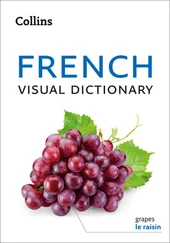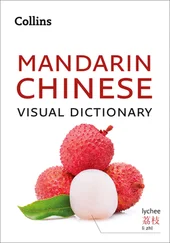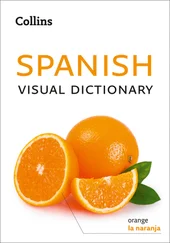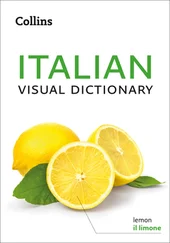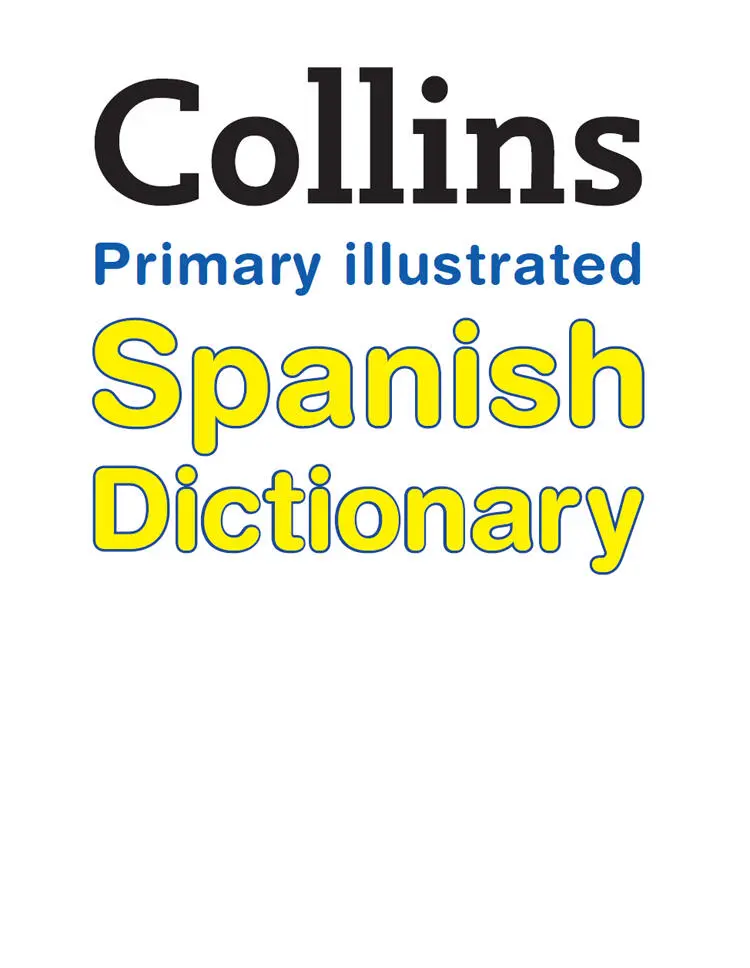
HarperCollins PublishersWesterhill Road Bishopbriggs Glasgow G64 2QT Great Britain
www.collinsdictionary.com www.collins.co.uk
First Edition 2015
Previously published as Collins First Time Spanish Dictionary 2003, 2008, 2012
© HarperCollins Publishers 2015
eBook Edition © February 2015 ISBN 978-0-00-811574-6
Version: 2015-02-27
Collins® is a registered trademark of HarperCollins Publishers Limited
A catalogue record for this book is available from the British Library
Art direction by Mark Thomson
Designed by Wolfgang Homola
Typeset by Davidson Pre-Press, Glasgow
AcknowledgementsWe would like to thank those authors and publishers who kindly gave permission for copyright material to be used in the Collins Corpus. We would also like to thank Times Newspapers Ltd for providing valuable data.
All rights reserved under International and Pan-American Copyright Conventions. By payment of the required fees, you have been granted the non-exclusive, non-transferable right to access and read the text of this e-book on screen. No part of this text may be reproduced, transmitted, downloaded, decompiled, reverse engineered, or stored in or introduced into any information storage and retrieval system, in any form or by any means, whether electronic or mechanical, now known or hereinafter invented, without the express written permission of HarperCollins.
Entered words that we have reason to believe constitute trademarks have been designated as such. However, neither the presence nor absence of such designation should be regarded as affecting the legal status of any trademark.
HarperCollins does not warrant that www.collinsdictionary.com, www.collins.co.ukor any other website mentioned in this title will be provided uninterrupted, that any website will be error free, that defects will be corrected, or that the website or the server that makes it available are free of viruses or bugs. For full terms and conditions please refer to the site terms provided on the website.
PUBLISHING DIRECTOR
Rob Scriven
MANAGING EDITOR
Gaëlle Amiot-Cadey
PROJECT MANAGEMENT
Alex Hepworth
Susanne Reichert
CONTRIBUTORS
Morven Dooner
Cordelia Lilly
Julie Muleba
José María Ruiz Vaca
Malihé Forghani-Nowbari
José Antonio Gálvez Castiella
ILLUSTRATIONS
Q2A Media
ILLUSTRATED SUPPLEMENT
Marcella Grassi
© Boroli Editore 2008
Cover
Title Page
Copyright
Introduction
Using the dictionary
Parts of speech
Answer key
Spanish – English
Language plus
Animals
Body
Clothes
Colours
Family
Days and dates
Weather
Places
Food
Fruit and vegetables
Drinks
Furniture
Jobs
At school
Rooms
Numbers and time
Spanish verbs
Illustrations
English – Spanish
About the Publisher
The Collins Primary Illustrated Spanish Dictionaryis a new bilingual dictionary aimed at primary school children who are starting to learn Spanish.
Access to a dictionary which is pitched at an appropriate level is a vital part of the language-learning process. The content of this dictionary has been carefully selected to reflect current trends in primary education and help children with acquiring basic language-learning skills.
The key aims of the Collins Primary Illustrated Spanish Dictionaryare:
• to develop both language skills in Spanish and language learning skills in general
• to cover the four key areas of language attainment: listening, speaking, reading and writing
• to reinforce key aspects of the language by the use of notes and feature boxes throughout the entries
• to extend cultural awareness by providing information about Spain, especially where traditions differ from those in Britain
The Collins Primary Illustrated Spanish Dictionarysupports language learning in a number of specific ways:
• it develops children’s knowledge of how language works by encouraging them to understand, analyse and use simple aspects of grammar
• it develops children’s individual learning skills by using a wide range of notes that explain things in a simple but interesting way
• it enables children to make comparisons between Spanish and English by encouraging them to explore the similarities and differences between the two languages and cultures
• it introduces young learners to all the basic elements of a bilingual dictionary and provides detailed instructions on how to get the most out of using the dictionary
The Collins Primary Illustrated Spanish Dictionaryis presented in an easy-to-use format which is intended to appeal to children of primary school age. It provides lots of simple, relevant examples and tips on how to remember words, and how to avoid some of the pitfalls of translation. It also features key phrases, illustrations and information about life in Spain, making it an invaluable and exciting new resource.
Step one:
Pick the right side
Remember there are two halves to the dictionary. If you want to know what a Spanish word means, look in the first half of the dictionary.
If you want to translate an English word into Spanish, look in the second half, which is English-Spanish. It comes after the supplement in the middle of the dictionary.
1Which of these words would you look up on the Spanish-English side of the dictionary?
ver brother horse teléfono
2Look at page 51 of the dictionary. Is this the Spanish side or the English side? How can you tell?
3Look at page 150 of the dictionary. What is shown at the top of the page, down the side?
4Is invitethe first or the last word on page 437?
Remember that you do not read across the whole page in a dictionary – you have to read down the columns.
5Which word comes immediately after aburrido ?
Step two:
Find the right word
A B C D E F G H I J K L M N O P Q R S T U V W X Y Z
Words are in alphabetical order in the dictionary – like names in the phone book, and in a school register. The alphabet is shown down the edge of each page of the dictionary. You can sort words into alphabetical order by looking at the first letter of each word.
6Can you put these names in alphabetical order?
María, Isabel, Juan, Jorge, David, Arturo, Carmen
When two words start with the same letter, look at their second letters.
7In alphabetical order which comes first – Juanor Jorge?
8This is the order of the days of the week on a calendar:
Monday, Tuesday, Wednesday, Thursday, Friday, Saturday, Sunday
Which day comes first in a dictionary? Which comes last?
9 Thursdaycomes before Tuesdayin a dictionary. Why?
10Put the seven days of the week into alphabetical order. If the first letters are the same, and the second letters are the same, look at the third letters.
Читать дальше
